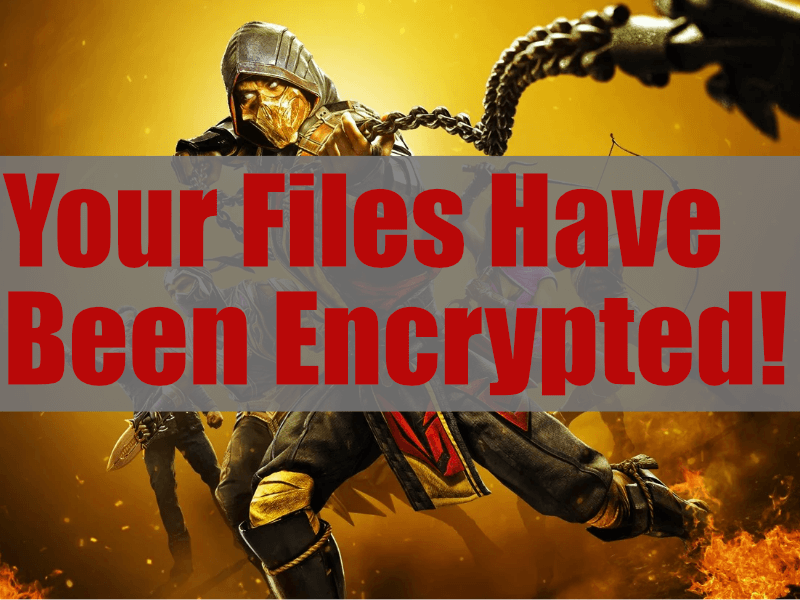Recovering From a Ransomware Attack
If you have been following the news you might be aware of the string of ransomware attacks that have been attacking US businesses for the last two years.
Ransomware attacks have hit businesses of all sizes, from large-scale companies like Apple, Accenture, and Kaseya to thousands of small businesses that we don’t even know the names of.
Among the victims were businesses that never imagined being hit by any such attack, such as medical institutions, educational organizations, and many other small-scale companies.
The worst part is the attack window. Everything happens so suddenly that victims are often clueless about what they should do besides paying the ransom demand.
Therefore, it is always a good idea to know beforehand what to do in case of a ransomware attack. Since Tekkis is an expert in ransomware recovery, here is a helpful guide that will help you in navigating through these difficult times.
Whether you are looking for preemptive preparation against a ransomware attack, or for tips about how to recover from a ransomware attack you are in the middle of, all the information you require is present here.
Note that in this article, we will talk about how to recover from a ransomware attack. For prevention information, you can contact us on how to protect against a ransomware attack.
What is a Ransomware Attack and How It Works?
The basics of a ransomware attack are very simple- the attacker holds an organization’s data hostage in return for a ransom. The organization is unable to use or access its data until they have met the attacker’s demands.
Crypto Ransomware
The data itself can be locked in many ways. In some attacks, attackers encrypt the data with a unique key known only to the attackers. They promise the organization to decrypt the data once the organization meets the attacker’s monetary demands. Therefore, while the organization can access its data, it cannot use the data in any way since everything is encrypted.
Locker Ransomware
In the other case, the attackers lock the data and cut off the organization's access to that data. The attacker promises to unlock the data once the organization meets the monetary demand of the attackers (i.e. pays the ransom).
Should I Pay the Ransom?
The primary question when you are a victim of a ransomware attack is- Should I pay the ransom?
Many victims end up paying the ransom right away in panic. However, that is not the right thing to do.
We understand that there is a lot at stake and the time window is limited. However, you should consider these factors:
Ransomware Attackers Are Cybercriminals
We are sure that the attackers sweetly tell you that you will get your data once you have paid the ransom. However, these attackers are cybercriminals and nothing holds them to this deal.
If you believe they will give you the data back, you are taking the word of a cybercriminal. There is a good possibility that even when you have paid the ransom, they might still dump the data on the dark web or delete it entirely.
Therefore, paying the ransom isn’t a guarantee that everything will get better.
There Might Be Alternative Fixes
As you will read in the next section, there are other possible recovery methods from a ransomware cyberattack. Paying the ransom is not always the only way out.
Therefore, go through every one of these alternative fixes before you even think about paying the ransom.
You Would Be Encouraging More Ransomware Attacks
Ransomware attackers are people who make a living out of ransomware attacks. They attack businesses, and many businesses pay, so they attack more businesses.
Therefore, if business owners keep paying the ransomware attackers, it is an encouragement to them to conduct more and more attacks on more businesses.
Of course, ransomware attacks won’t stop entirely if you don’t pay. However, you would be making an important contribution in this regard.
Financial Distress
There have been instances where businesses have to shut down their operation due to the financial distress caused by a ransomware attack.
The financial cost of a ransomware attack is not just the demanded ransom. To recover your data, implement proper security checks, and clean your system from viruses, you will have to spend a significant amount.
Add to it the cost of paying the ransom and you are looking at financial distress.
How to Recover From a Ransomware Attack?
So now that you know that fulfilling the ransomware’s demands isn’t an option, what should you do? Well, there are several alternatives that you can try.
Here is a list of actions that you can take to recover from a ransomware attack. For your ease, we have sorted these actions in the order in which you should use them.
Step 1. Seek Professional Help
If you have become a victim of a ransomware attack, it is indicative that your current cybersecurity checks weren’t adequate.
Either you are not operating with an in-house cybersecurity team (which is understandable for a small to medium-scale business), or your cybersecurity team hasn’t done a good job.
The first thing to do is to get the help of outside professionals. We are talking about consulting a cybersecurity agency such as Tekkis Cybersecurity (Tekkis), which is skilled in ransomware recovery and knows the ins and outs of these attacks.
Fortunately, Tekkis provides a one-on-one consultation with their top ransomware expert without any fees. You can schedule the consultation at a time of your convenience.
If you choose the right cybersecurity agency and go ahead with their recommendations, you might not have to go through the rest of the steps mentioned below.
Step 2: Reporting the Ransomware
In the US, critical businesses must report any cyberattack within 72 hours of the attack discovery. Critical businesses in this regard include industries working in sectors such as healthcare, energy, food, etc.
Therefore to follow the government regulations, you should report the cyberattack on the online government portal, or call the local police department for assistance.
Step 3: Check Online For a Key
Most ransomware attackers that use crypto-ransomware encrypt infect your systems with common malware such as Noway, Daizol, Maze, Ragnarok, etc.
These common ransomware are already decrypted and you can download the decryption keys online for free.
However, while downloading these ransomware decryption keys is easy, you also need to identify which ransomware infected you.
Once you have identified the ransomware and have its key, you need to use the key to decrypt your files. Then you need to deep cleanse your system.
All this is fairly technical and requires a deep understanding of cybersecurity and ransomware attacks. Therefore, we would recommend that you seek our help with the same.
Keep in mind that not all ransomware have a ransomware decrypt key available, so finding the required key online is not a certainty. There is a great chance that the ransomware that infected you is new and its key isn’t available yet.
Step 4: Using Ransomware Decryption Software
You can use Tekkis’s decryption service to automatically detect the kind of ransomware that has infected your system and then decrypt ransomware using our advanced algorithms.
These ransomware decryption algorithms are created by our world-class team of experts, so they break through most of the ransomware encryptions out there.
Step 5: Restoring Data Backups
If you had taken preventive ransomware protection measures that we mentioned in our other guide, you might have data backups ready.
Before you restore your data backups, make sure that you deep cleanse your systems to remove the current malware infection. Otherwise, even the data in your backups will be infected by this malware.
There are many ways to restore your data. If you know how to restore your data, well and good. Otherwise, you can get assistance for system cleanse as well as data restore.
Why Choose Tekkis to Recover From Ransomware?
Tekkis is the first choice of US businesses when it comes to recovery from ransomware. This is because of the following reasons:
US-Based Cybersecurity Agency
First and foremost, Tekkis Cybersecurity is based in the US. As you might know already, most of the ransomware attacks on US businesses originate from outside our borders.
Therefore, you cannot trust external companies when it comes to protection from ransomware. Tekkis has all of its offices in the US, so you know who you are working with.
Transparent Operation
At Tekkis, we focus on the policy of transparency with our clients. Therefore, we will give you an accurate report on the current status of your systems and we will go through you before we implement any action.
World-Renowned Experts
Tekkis’s team is carefully handpicked to include the best of the best in this field. Our experts know what they are doing. Even the security solutions that we use, such as the ransomware decryption service, are created by our experts.
Privacy
We value the private data and the private operations of every business. Therefore, we ensure complete privacy for any information that you share with us.
Additionally, we are well-versed with the data privacy and protection regulations in the US such as HIPAA, and follow them to the word.
Free Consultation
Many cybersecurity agencies will tell you they can help you recover from ransomware. However, once you pay the hefty consultation fee, they will say that there is nothing they can do in your case.
Tekkis is a customer-centric operation. Therefore, we offer you a free ransomware recovery consultation and there is no obligation at your end to get our services. You can go through the consultation with our expert and then do what you feel is right.
Endnotes
Ransomware is a disaster for most businesses and nothing about it can be taken lightly. If you are in the middle of a ransomware attack, all the information presented here will help you in dealing with the same.
For any further assistance, feel free to contact us or request a callback from our expert.



